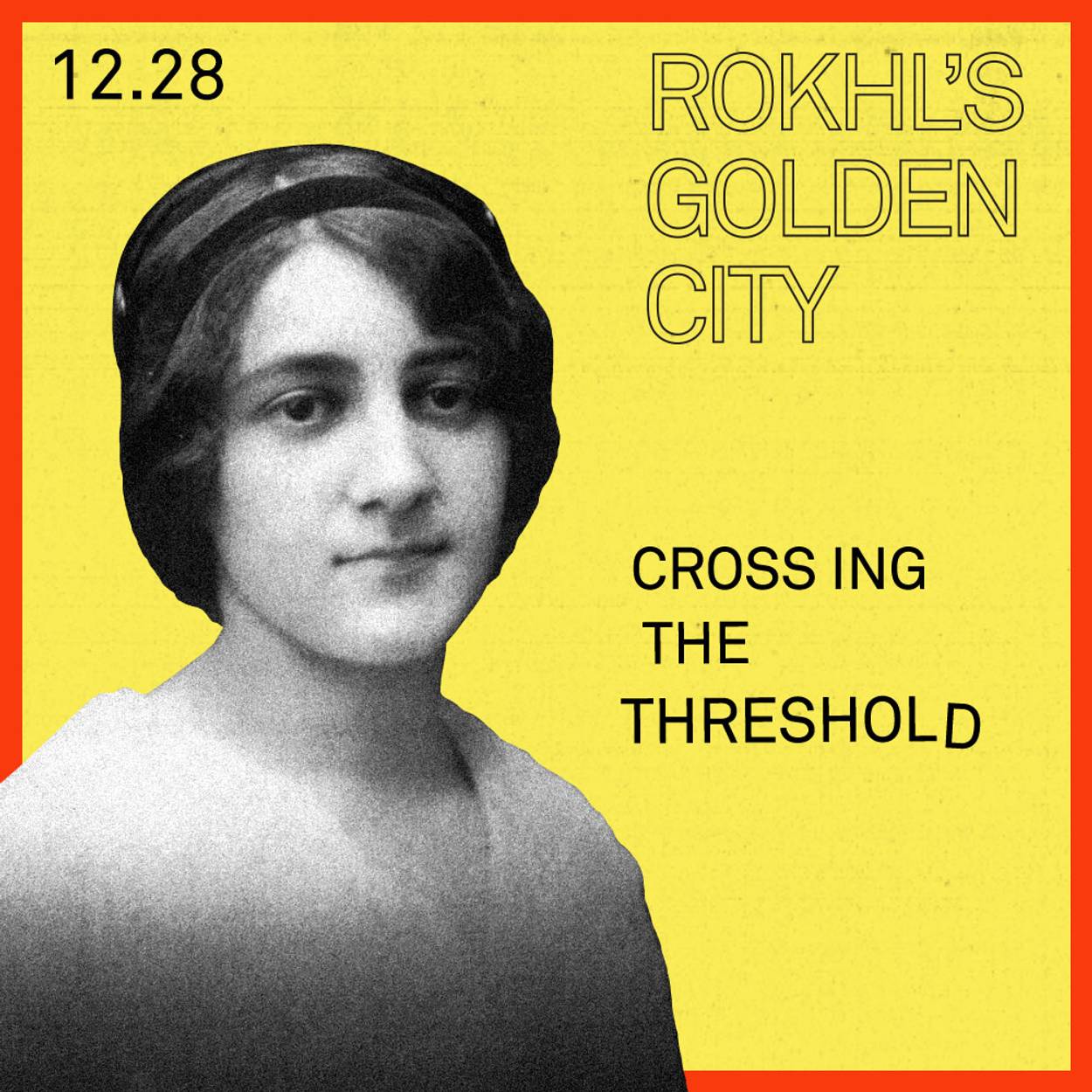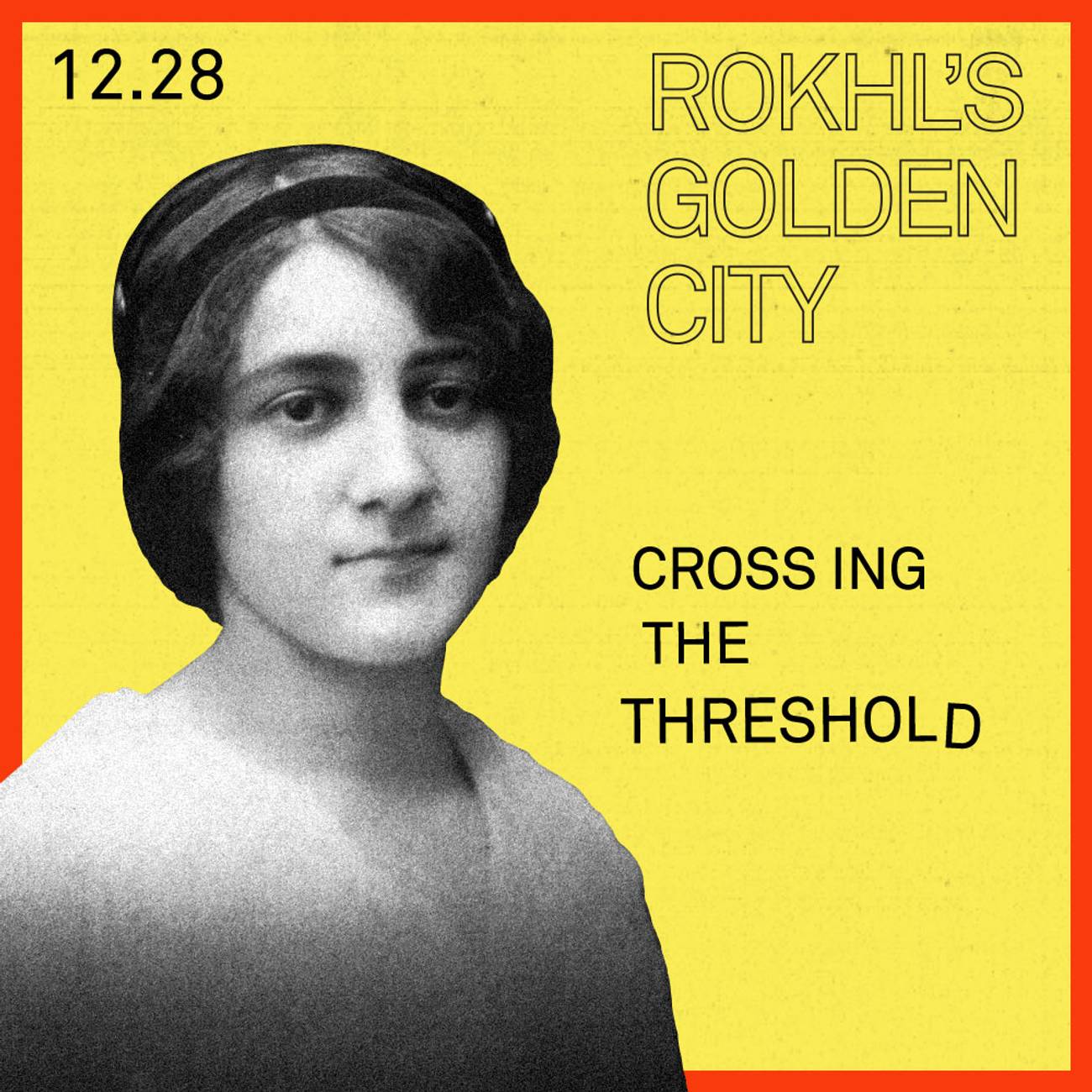A Trip to Yiddishland
The Yiddish Book Center’s new exhibit goes beyond the ‘great men’ in our cultural history

Wikipedia

Wikipedia

Wikipedia

Wikipedia
As I’m sure everyone knows, if you are going to be in Warsaw, the Polin Museum of the History of Polish Jews is an absolute must-see for anyone interested in Jewish history. Located in the Muranow neighborhood, the heart of the former Jewish ghetto, the Polin building is modern in an inviting way, full of light and life. No attempt is made at recreating some kind of ersatz “shtetl” feel. (One shudders to think.) Given the epic story the museum sets out to tell in its core exhibits, it’s easy to miss one of the quieter rooms along the periphery of the building.
There, at least when I visited in 2022, you will find a room-length, abstracted map of Poland, with the names of some of its most famous Jews pinned to their cities of birth. Many of these personalities have a line of trajectory connecting them to their most famous destination. David Ben-Gurion is pinned to the city of Plonsk, but a straight line joins him to distant Tel Aviv; two very different women, Sarah Schenirer and Helena Rubinstein, represent Krakow, and so on. Countries as far away as Australia and Uzbekistan are represented on this map, but Warsaw, the former capital of global Yiddish culture, is firmly placed at the center of the world.
The display captures a remarkable and rather new way of presenting public history. Of course, it makes sense that a museum telling the story of Jews in Poland would focus on place. But in recent years, mapping, geography, and social network theory have become important modes both in academic scholarship as well as public-facing educational spaces.
Rather than simply focusing on timelines and the “great men” who push them forward, here, the big picture hangs on place, as well as time. Relationships, between people and places, are just as important as events. Perhaps coincidentally, but probably not, such an approach to history has far more room for women, and everyone else who isn’t a “great man.”
This relational approach animates the breathtaking new core exhibition at the Yiddish Book Center, Yiddish: A Global Culture. The Yiddish Book Center, in Amherst, Massachusetts, is a little bit older than the Polin museum, but it feels modern in the same way. It is full of light and warm surfaces and even comfy places to sit. The building was always an inviting place for curious visitors, but with the Oct. 15 unveiling of this new core exhibition, it has established itself as a cutting-edge educational space, even with a tiny fraction of the space of a traditional museum.
Visitors make their way from the front hall to the lower floor main exhibition space by way of a gently sloping ramp. A newly installed 60-foot brightly colored, “Yiddishland” mural now hangs along that walkway. Created by illustrator Martin Haake, the mural has the chunky, cheery, tactile quality of your favorite childhood picture book, suggesting subtle thematic connections with the book center’s Hampshire College campus neighbor, the Eric Carle (of Very Hungry Caterpillar fame) museum.
Much thought and many words have been spent theorizing the reality (or ephemerality) of the place we call Yiddishland. But the “Yiddishland Mural” eschews theory for glorious detail. With the Bundist youth movement of Melbourne, Australia, on one end and the Mir Yeshiva students of wartime Shanghai on the other, the mural plots Yiddishland across continents and across time. Like a grown-up, Yiddishist version of Richard Scarry’s Busy, Busy Town, we are introduced to some of the shops, libraries, historic sites, moments, and movements that make up Yiddishland. Most importantly, we meet its citizens, past, present and future. When I was a baby Yiddishist, such an overview-introduction would have been very much focused on the “great man,” self-invented mythology of the three classic writers: Mendele Moykher Sforim, I.L. Peretz, and Sholem Aleichem. Then there’s Alexander Tsederboym, who invented the Yiddish newspaper, and Avrom Goldfaden, who did the same for Yiddish theater. Easy.
That simplistic overview has been wonderfully enriched and deepened by decades of new research, as well as new approaches to history. Sure, we meet Peretz in Warsaw, but on the mural, it’s in the context of his famous mausoleum (still extant today), where he is interred with his friends Yankev Dinezon and S. Ansky. Sholem Aleichem is there, too, shown seated in a train car, finding inspiration for his “Railroad Stories.” Rather than being painted as solo patriarchs of a serious, new, modern Yiddish culture, one seemingly created without the aid of a single woman, this new map of “Yiddishland” depicts Mendele, Peretz, and Sholem Aleichem as co-creators of a culture, one that began before them and extends far beyond.
I could not be prepared for the shock of joy in seeing, for example, the celebrated proto-memoirist Glikl Haml at spot 19 on the map, seated at her writing desk, not far from spot 18, Isaac Bashevis Singer in Stockholm receiving his Nobel Prize for literature. Spot 20 illustrates two nurses attending eight babies lined up in cribs. Who are they? The caption tells us these are just a few of the babies born in DP camps right after the war, people like Anita Norich, Miriam Isaacs, and Wolf Krakowski. Those babies grew up to be the teachers, culture workers, and artists I have learned with and admired so much in my own Yiddishland life. Seeing them there on the mural isn’t just joyful, it feels like something verging on magic.
Even for such a small space, there’s too much in the new “Global Culture” exhibition to cover in just one column. There are Spotify playlists curated by klezmer superstars like Alicia Svigals and Sarah Gordon. Pullout drawers hold an array of DIY ’zines in and about Yiddish. Through unique objects, books, images, and captions, the exhibition covers topics like Soviet Yiddish, theater, celebrities, modernism, and the Holocaust.
To get more of an insider’s perspective on the project’s development, I recently spoke to the book center’s research bibliographer and editorial director, David Mazower. He also happens to be the exhibition’s chief curator. Mazower told me that from the beginning, he had wanted a central installation, “something that would have a sensory and visual impact.” They found that impact with a jewel-box re-creation of the Warsaw salon of I.L. Peretz. Peretz wasn’t just one of the three “classic” writers of modern Yiddish literature. His salon was where the next generation of writers and artists came to meet him, and each other. And rather than reify the “great man” history of Peretz, the salon brings you into the story of the man and his circle, giving you a small taste of what it meant to be part of that world. The walls of the salon are hung with two dozen portraits of writers who were part of Peretz’s circle: Joseph Opatoshu, Ansky, Dovid Bergelson, Tea Arciszewska, and Hava Shapiro, to name a few. It’s only in the last few years that the women of Peretz’s salon would have been mentioned in an exhibit like this at all.
Mazower told me that memoirs by participants in the salon were an important resource when they set about designing the installation. The idea was not to build an exact historical recreation, but to take you on a journey, “allowing you to imagine yourself back in turn-of-the-century Warsaw, in the presence of this super charismatic figure.” After having taught my own students about Peretz and his circle this fall, it was an extra-magical moment for me, crossing the threshold into that tiny salon, getting to “feel” the place I had visited so often in my imagination.
Telling the story of Yiddish is hard. What even do we mean when we talk about Yiddish? Is it a language? A literature? A “secular” culture or the day-to-day lived medium for traditional Jewish religious practice? The answer is all of the above and more. And no single exhibit can cover its entirety. The endeavor is especially hard when you are reaching an audience for whom the language itself is new territory. Even with all those challenges, the new “Global Culture” exhibition is a magnificent achievement; a fun, fascinating, anti-lachrymose testament to the diverse lives of Eastern European Jews around the world.
VISIT: The Yiddish Book Center is located in the gorgeous Pioneer Valley in Amherst, Massachusetts. They’re open every day except Saturday. Plan your visit here … Are you finally ready to learn Yiddish? This January, the Yiddish Book Center will once again offer its one-week intensive program, the Bossie Dubowick Yiddish School Online. More information here … When we spoke for this piece, David Mazower raved about a new exhibit now up at the Yiddish Book Center’s campus neighbor, the Eric Carle Museum of Picture Book Art. And if David raves about something, I take it seriously. The artist Seymour Chwast is justly celebrated for his long career in graphic design. But he is also the author of 40 books for children, now receiving an in-depth look at the Eric Carle. Kid in a Candy Store: The Picture Book Art of Seymour Chwast is on view through April 2024.
ALSO: Because I am a language maximalist, I always recommend the joy that is the (seventh annual!) Ladino Day program. Jan. 21 at the Center for Jewish History. Make sure to reserve your ticket in advance … The Yale Fortunoff Video Archive for Holocaust Testimonies is releasing its latest album, Shotns/Shadows. This is a truly special ongoing project, with artist-researchers (Zisl Slepovitch and Sasha Lurje) drawing on stories, poems, and song found in the Fortunoff Archive. Hear these songs in concert on Jan. 24 at YIVO. More info here … If you’re in London, make sure to catch “Secrets of the London Stage,” led by the brilliant scholar-performer Vivi Lachs. The event will be a “mix of readings from one-act plays, sketches, and songs from London’s immigrant East End.” With special guests David Schneider (London), Shane Baker (New York), and more. Jan. 24, at London’s JW3. More information here … Tickets go quickly for the New York Jewish Film Festival, so make sure you get yours now. Jan. 10-24 … This February, the International Association of Yiddish Clubs (IAYC) will debut Di beshutfesdike leyenung, the Community Read, via Zoom. Raphael (Refoyl) Finkel will lead the program, featuring a short story by Sholem Aleichem. The event is dedicated to the memory of poet Troim Katz Handler. Sunday, Feb. 11, at noon. Make sure to register here.
Rokhl Kafrissen is a New York-based cultural critic and playwright.